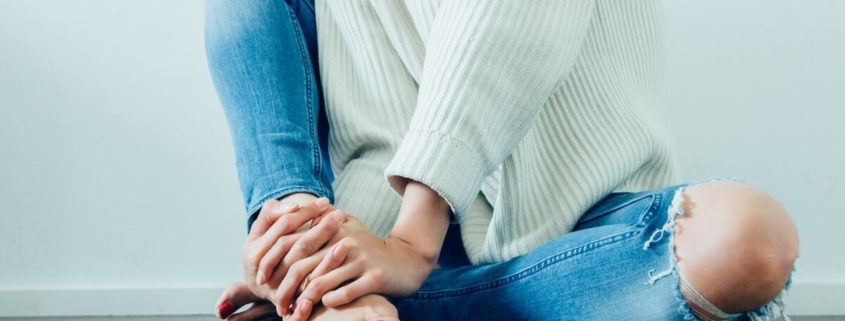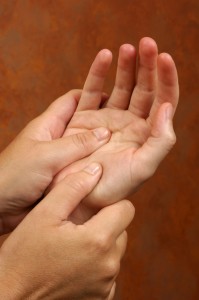Do you notice increased joint pain or aches from past injuries in cold climates? If so, you’re not alone. A phenomenon occurs this time of year when Vancouver Island’s warm summer climate is replaced by a cooler and wetter fall and winter. The 2,400-year-old phenomenon I’m referring to is a sudden increase in people being bothered by joint pain. Is it a seasonal coincidence, or is there a correlation between colder, wetter weather and worsening aches and pains?
Does Weather Affect Joint Pain?
The short answer is that it’s possible that a sudden or prolonged drop in barometric pressure negatively affects arthritis and joint pain, but at this point, the correlation has yet to be proven. While the jury is out on what exactly causes the notable increase in winter aches and pains, a couple of theories are worth considering as follows:
Blame it on the rain (and barometric pressure):
If you notice sudden or worsening pain or swelling on rainy days, this theory may explain why. Drops in barometric pressure, typical during periods of rain, can cause your muscles, tendons, interstitial fluids and tissues to expand slightly, affecting how much pressure is placed on surrounding nerves. The degree of swelling and pain may depend on contributing factors such as arthritis, edema and past or present injuries.
Drops in activity:
While many islanders are active year-round, it’s natural for some of us to stay inside and reduce our overall physical activity and energy output when it’s cold, wet and generally “blah” outside. Just as too much activity can leave muscles sore, too little activity — especially when your body has become accustomed to being active — can increase the sensation of joint pain and general achiness. Drops in activity coupled with a colder climate can decrease circulation and increase muscle tension and fluid retention around joints, causing muscles and tendons to feel more stiff and sore than usual.
Simple Ways to Reduce Winter Aches and Joint Pain
Warm Up:
When fall and winter chills aggravate aches and pains, the easiest thing to do is warm up at home with a heating pad, hot water bottle, or warm bath. Take essential precautions when using an electrical heating pad, hot water bottle, microwaveable bean bag or any other compresses:
- First, the temperature you apply should be comfortably warm and not hot – heat builds up on your skin the longer a warm compress is applied;
- Always use a towel or cloth between the heat source and your skin to prevent burns;
- Never fall asleep while using a heating pad or hot compress (opt for electrical heating pads with built-in timers) or use a warm beanbag or hot water bottle wrapped in a towel;
- Never apply heat if wounds are present or infection is suspected;
- Apply heat in 10-20 minute intervals or shorter;
- Pay attention to how you feel — the heat you apply should never feel hot, and if the pain or swelling increases instead of improving, stop and consult with a physician or trusted health practitioner immediately.
Get and Stay Active:
You may not feel like being active during darker, wetter and colder seasons, but consider that staying active not only helps mitigate aches and pains while keeping you fit year-round, but regular exercise can also help banish the winter blues. Be sure to take a few minutes at the end of your activities to stretch your muscles — paying extra attention to the areas that tend to bother you most. One important word of caution, consult with a health practitioner before starting a new workout routine or increasing your activity — especially if you have preexisting health conditions or old injuries.
Get Help and Relief From Massage Therapy and Physiotherapy:
When joint pain, old injuries, and muscle tension persist or interfere with the activities you love and your overall well-being, a professional massage therapist or physiotherapist can help. Massage therapy and physiotherapy can help improve circulation, mobility and strength where it’s needed most while helping prevent re-injury and soreness from unaddressed muscle imbalances and suboptimal movement patterns. Booking an appointment and consultation with a massage therapist or physiotherapist is a great place to start, and they will likely give you pain-reducing tips and exercises you can perform between sessions at home.
If Your Pain Persists or You’re Unsure Where to Start
Give our team of practitioners a call at Diversified Health Clinic today at (250) 382-0018 or book an appointment online. If you’re unsure who to book your appointment with, ask us when you call. Our diversified approach and initial consultation process ensure you’ll be placed in the best care possible, with a practitioner and plan tailored to your specific situation and needs.



